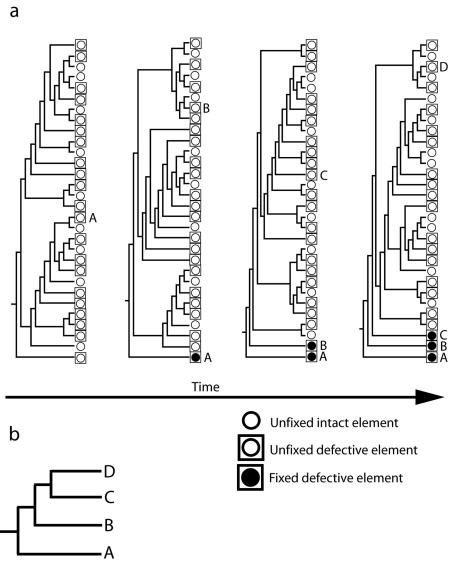FIG. 4.
Proposed model of HERV-K(HML2) family evolution within humans. (a) At each time point, there is a large unfixed population of elements, a proportion of which are replication competent and infectious, whereas others are defective. Some of the subset of defective elements, but none of the replication-competent elements, eventually drift to fixation. The population of unfixed elements is continuously replenished by new insertions resulting from the replication of intact and unfixed elements. (b) Over time, the fixed and defective elements (i.e., A, B, and C) accumulate so that in any one genome all, or almost all, of the elements are defective, the intact and infectious elements being present only in a very small proportion of individuals.

